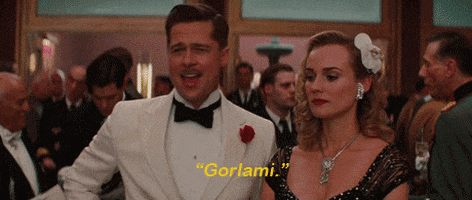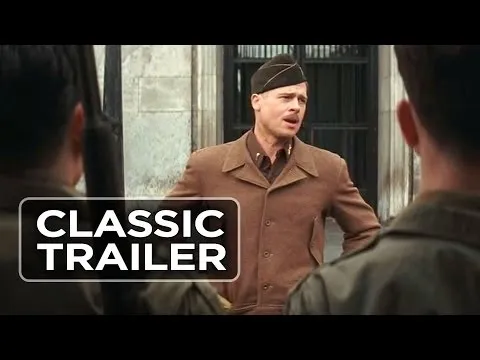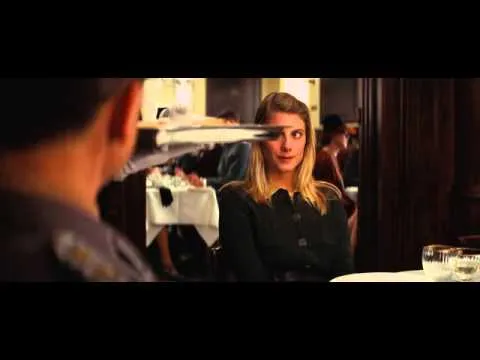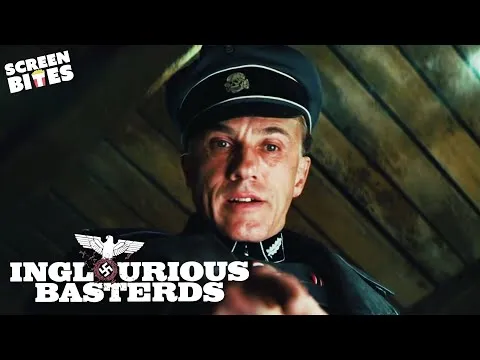



"Inglourious Basterds, a cinematic masterpiece, stands as a canonical pillar in Quentin Tarantino's vast legacy. It is a must-have treasure for any self-proclaimed film buff. Let's delve into the fabric in which Tarantino weaves his genius, exploring each strand with keen insight. And above all, revealing (from my perspective) why this is the best film made by the great genius of Tarantino.
The starting point, Hans Landa, embodies the duality of evil at its most charismatic. Christoph Waltz embodies him masterfully, infusing Landa with a haunting serenity that evokes chills. His cunning and subjugating language make him an unpredictable force. Tarantino, as a craftsman of complex characters, gives Landa the ability to steal scenes with the art of conversation, manifesting his mastery of creating villains.
Uchrony, a brilliant literary and narrative device, is brought to life in the plot. Tarantino, a bold visionary, rewrites history by placing a group of Nazi hunters behind enemy lines. This manipulation of time and events leads to a narrative catharsis. The Opera House becomes the epicentre of this historical reworking. In this enclave, tension breeds underlyingly as a choreography of deceit and revenge is woven together.
"Inglourious Basterds", obra maestra cinematográfica, se yergue como un pilar canónico en el vasto legado de Quentin Tarantino. Es un tesoro imprescindible para todo cinéfilo que se autoatribuye tal título. Adentrémonos en la tela en la que Tarantino teje su genialidad, explorando cada hebra con aguda perspicacia. Y sobre todo, revelando (Desde mi perspectiva) por qué esta es la mejor película hecha por el gran genio de Tarantino.
El punto de partida, Hans Landa, encarna la dualidad de la maldad en su forma más carismática. Christoph Waltz lo personifica magistralmente, infundiendo en Landa una serenidad inquietante que evoca escalofríos. Su astucia y lenguaje subyugante lo convierten en una fuerza impredecible. Tarantino, como artífice de personajes complejos, otorga a Landa la capacidad de robar escenas con el arte de la conversación, manifestando así su maestría en la creación de villanos.
La ucronía, brillante recurso literario y narrativo, cobra vida en la trama. Tarantino, audaz visionario, reescribe la historia al situar a un grupo de cazadores de nazis tras las líneas enemigas. Esta manipulación del tiempo y los eventos desemboca en una catarsis narrativa. La Sala de la Ópera se convierte en el epicentro de esta reelaboración histórica. En este enclave, la tensión se engendra de forma subyacente mientras se entreteje una coreografía de engaños y venganza.
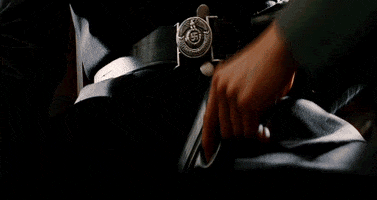
The film's greatness lies in its meticulous detail. The deliberate pauses in conversations, the palpable tension in every meaning-laden silence and the cleverly crafted dialogue weave a tapestry of suspense and anticipation. The narrative is not rushed, but unfolds with the cadence of a waltz, allowing each scene to breathe and evolve.
Robert Richardson's cinematography is a canvas on which colours and composition paint a vivid picture. From the French countryside to the interiors of speakeasies, the aesthetic is a compendium of visual evocations. The opening of the film, with the words "Once upon a time in a Nazi-occupied country", lights the fuse on an adventure that exudes narrative audacity.
"Inglourious Basterds fuses intrigue, alternate history and stylised Tarantinian violence into a symphony that resonates in the cinephile soul. Each frame is a brushstroke on the canvas of Tarantino's mastery, a reminder that cinema is a medium capable of transcending the mundane and being tinged with the inks of creative genius.
La grandeza de la película radica en los detalles meticulosos. Las pausas deliberadas en las conversaciones, la tensión palpable en cada silencio cargado de significado y los diálogos ingeniosamente elaborados tejen un tapiz de suspenso y anticipación. La narrativa no se precipita, sino que se desarrolla con la cadencia de un vals, permitiendo que cada escena respire y evolucione.
La cinematografía de Robert Richardson es un lienzo en el que los colores y la composición pintan una estampa vívida. Desde los campos franceses hasta los interiores de tabernas clandestinas, la estética es un compendio de evocaciones visuales. La apertura de la película, con las palabras "Érase una vez en un país ocupado por los nazis", enciende la mecha de una aventura que destila audacia narrativa.
"Inglourious Basterds" fusiona intriga, historia alternativa y estilizada violencia tarantiniana en una sinfonía que resuena en el alma cinéfila. Cada fotograma es un pincelazo en el lienzo de la maestría de Tarantino, un recordatorio de que el cine es un medio capaz de trascender lo mundano y teñirse con las tintas del genio creativo.
With a masterful command of narrative pacing, Tarantino weaves a web of interwoven characters that stir deep emotions and connections. From Shosanna, the revenge-seeking cinema owner, to Aldo Raine, the Basterds' leader with his ruthless thirst for justice, each figure is a vital piece in the puzzle. Their stories converge in the final confrontation, where vengeance mingles with the whisper of liberation in a bloody and satisfying catharsis.
The music becomes an element of the narrative, synchronising its notes with the film's heartbeat. The choice of songs, such as the use of David Bowie's "Cat People", integrates sublimely with the scenes, heightening the emotions and adding melodic nuance to the plot. This tandem between music and image unfolds a unique sense of narrative harmony.
Tarantino's signature mise-en-scène is manifested in the meticulous attention to objects. Landa's pipe, Nazi belts and pencils trigger a sense of anticipation, becoming instruments of developing suspense. These seemingly trivial objects take on transcendental significance as the story progresses.
Con un dominio magistral del ritmo narrativo, Tarantino teje una red de personajes entrelazados que despiertan emociones y conexiones profundas. Desde Shosanna, la dueña del cine que busca venganza, hasta Aldo Raine, el líder de los Basterds con su despiadada sed de justicia, cada figura es una pieza vital en el rompecabezas. Sus historias convergen en la confrontación final, donde la venganza se mezcla con el susurro de la liberación en una catarsis sangrienta y satisfactoria.
La música se convierte en un elemento más de la narrativa, sincronizando sus notas con los latidos del filme. La elección de canciones, como el uso de "Cat People" de David Bowie, se integra de manera sublime con las escenas, elevando las emociones y añadiendo un matiz melódico a la trama. Este tándem entre la música y la imagen despliega una sensación única de armonía narrativa.
La puesta en escena, característica distintiva de Tarantino, se manifiesta en la atención meticulosa a los objetos. La pipa de Landa, los cinturones nazis y los lápices desencadenan una sensación de anticipación, convirtiéndose en instrumentos de desarrollo del suspenso. Estos objetos, aparentemente triviales, adquieren un significado trascendental a medida que la historia avanza.
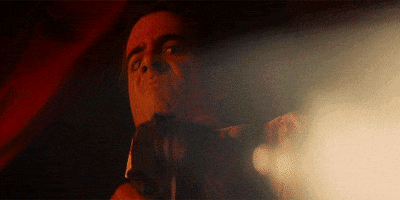

Violence, both raw and stylised, is integral to the narrative fabric. The climax in the film, with fire and fiery projections, is a perfect example of how Tarantino uses violence as an extension of emotion and conflict. In this chaotic dance of bullets and flames, the narrative merges with the visual aesthetic, creating a hypnotic experience.
The use of language is a testament to Tarantino's ability to manipulate words. The dialogue, dense and often ironic, are tools that reveal the psychology of the characters. The tavern scene, with its interplay of identities and rising tensions, is a masterful example of how speech can generate and convey the underlying turmoil.
"Inglourious Basterds is a narrative symphony where the threads of story, characters, music and aesthetics converge in a masterful tapestry. Tarantino, a skilful weaver of emotions, transports us to a uchronia full of details and nuances. His skill in the construction of unforgettable characters, his mastery in the manipulation of time and his ability to fuse violence and beauty make this film a cinematic experience that transcends the screen and becomes embedded in the collective memory of cinema.
La violencia, a la vez cruda y estilizada, forma parte integral del tejido narrativo. El clímax en el cine, con fuego y proyecciones ardientes, es un ejemplo perfecto de cómo Tarantino utiliza la violencia como una extensión de la emoción y el conflicto. En este baile caótico de balas y llamas, la narrativa se fusiona con la estética visual, creando una experiencia hipnótica.
El uso del lenguaje es un testimonio de la habilidad de Tarantino para manipular las palabras. Los diálogos, densos y a menudo irónicos, son herramientas que desvelan la psicología de los personajes. La escena de la taberna, con el juego de identidades y las tensiones en aumento, es un ejemplo magistral de cómo el habla puede generar y transmitir la agitación subyacente.
"Inglourious Basterds" es una sinfonía narrativa donde los hilos de la historia, los personajes, la música y la estética convergen en un tapiz magistral. Tarantino, hábil tejedor de emociones, nos transporta a una ucronía repleta de detalles y matices. Su destreza en la construcción de personajes inolvidables, su maestría en la manipulación del tiempo y su capacidad para fusionar violencia y belleza convierten esta película en una experiencia cinematográfica que trasciende la pantalla y se incrusta en la memoria colectiva del cine.
